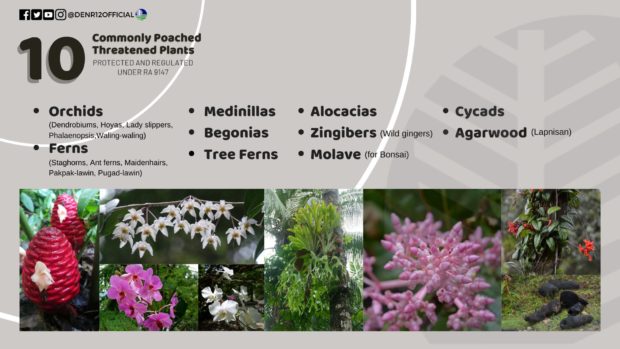On Endangered Species Day, attention drawn to harm inflicted on PH plants, animals
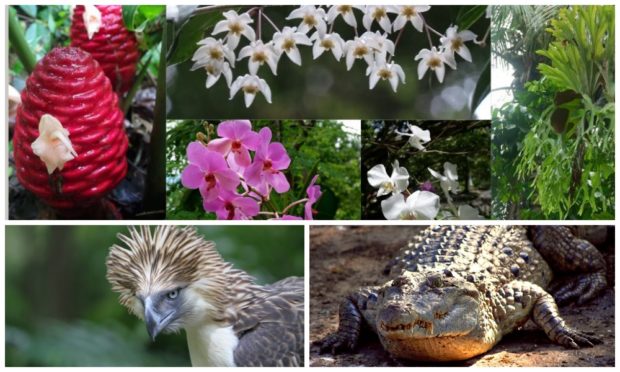
Worldwide, at least 37,400 species are at risk of disappearing, according to the International Union for Conservation of Nature’s (IUCN) Red List of Threatened Species.
The Philippines, according to data by the Biodiversity Management Bureau of the Department of Environment and National Resources (BMB-DENR), is among the world’s 17 mega-diverse countries and hosts more than 52,177 known species.
Over half of these species are indigenous to the region and cannot be found anywhere else in the world.
However, despite having a “very high degree of land and animal endemism,” the BMB-DENR said the Philippines is also considered as a biodiversity hotspot as the number of endangered and threatened species continues to grow due to habitat loss and abuse of animals.
On the 16th commemoration of Endangered Species Day, let’s take a look at the Philippines’ threatened and endangered species and what steps are being taken to protect them.
Article continues after this advertisementPH’s ‘critically endangered’ and ‘endangered species’
The DENR considers a species critically endangered if it is “facing an extremely high risk of extinction in the wild in the immediate future.”
Article continues after this advertisementEndangered species are those that are not critically endangered but are unlikely to survive in the wild for several reasons.
To classify species as critically endangered or endangered, the DENR follows internationally accepted criteria including:
- Destruction, modification, or curtailment of its habitat or range
- Over-utilization for commercial, recreational, scientific, or educational purposes
- Other natural or man-made factors harming the existence of wildlife
- Reduction in a species’ population size and area of occupancy
- Reduced population and/or continuing decline in population
As of 2019, the DENR recorded a total of 60 critically endangered species. Of these, eight were mammals, 32 birds, six reptiles, one amphibian and 13 invertebrates.
Some of the critically endangered species in the Philippines on the list were:
- Tamaraw (Bubalus mindorensis): A small, stocky buffalo that is endemic to the Philippine island of Mindoro. According to assessment by the IUCN Red List, the species’ population has been continuously decreasing since 2016. From what used to be around 10,000 in population in the 1900s, the Mindoro dwarf buffalo population has declined to 300.
- Dugong (Dugong dugon): Commonly known as sea cows, this grey-brown bulbous mammal with a flattened fluked tail, has no dorsal fins, with paddle-like flippers and a distinctive head shape is the first marine mammal to be legally protected in the Philippines. Aside from being occasionally hunted, dugong are often found dead on the shores after becoming entangled in fishing nets.
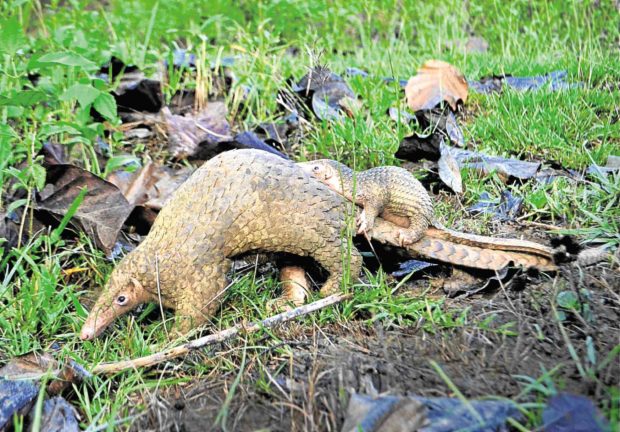
RUSH TO SAFETY. A pangolin and its young look for shelter in the wilds of Southern Palawan. PHOTO BY GREGG YAN
READ: How Tagbanua tribesmen protect the ‘mermaids’ of Palawan
- Philippine Eagle (Pithecophaga jefferyi): The country’s national bird and one of the rarest bird species in the world, the Philippine Eagle can be seen only in some parts of the Philippines, including Luzon, Samar, Leyte and Mindanao. Illegal logging and shooting, according to the Philippine Eagle Foundation, contribute to “Haring Ibon’s” decline in numbers. Philippine Eagle Week is observed annually from June 4 to 10 under Proclamation No. 79 signed on Feb. 24, 1999, by then-President Joseph Estrada.
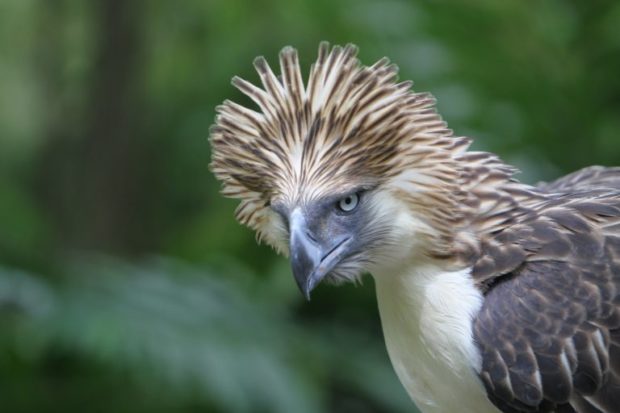
BIRD OF PREY. Sightings of the critically endangered Philippine eagle have been reported in several provinces in Mindanao, like Sarangani, prompting local officials to push for the protection of the island’s forests, the bird of prey’s habitat. PHOTO BY LYN RILLON
READ: DID YOU KNOW: June 4-10 is Philippine Eagle Week
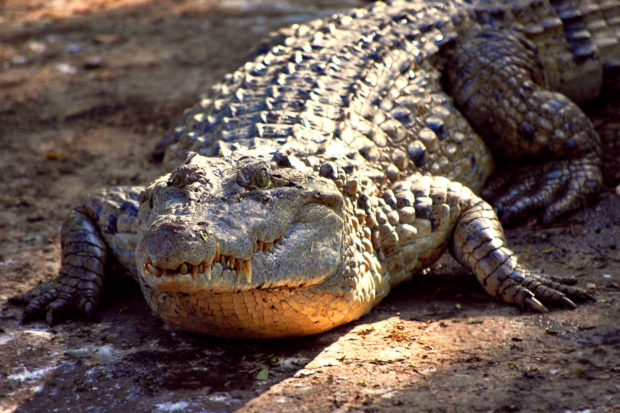
THREATENED, TOO. An adult Crocodylus mindorensis basks in the morning sun. Photographed in 2012 on the island of Palawan in the Philippines. PHOTO BY GREGG YAN
- Philippine crocodile (Crocodylus mindorensis): The population of the Philippine crocodile, also known as the Mindoro crocodile, has been decreasing since 2016. According to data by the IUCN Red List, the species’ estimated population is currently 92 to 137. Some of the main threats to this species were entanglement in fish nets, hunting, and killing.
THREATENED, TOO. An adult Crocodylus mindorensis basks in the morning sun. Photographed in 2012 on the island of Palawan in the Philippines. PHOTO BY GREGG YAN
The DENR listed 61 species that are considered endangered in the Philippines. It is composed of nine mammals, 40 birds, five reptiles, one amphibian, and six invertebrates.
READ: Time is running out for these critically-endangered species in the Philippines
Some of the familiar species were:
- Clamian deer (Axis calamianensis): Often found in Busuanga, Calauit, Culion, Marily, and Dimaquiat Islands in Palawan, the Clamian deer have a life span of 12-20 years. However, its population began to decline due to human settlement and agricultural expansion in their habitats. Also known as “hog deers,” the species is also often hunted for food.
- Palawan pangolin (Manis culionesis): Due to its nocturnal habits and elusiveness, there is a gap in research and knowledge about this species’ current population, according to studies cited by the IUCN. The species, which is endemic in Palawan, is unfortunately heavily hunted and is used for Chinese medicine because of its scales, which are basically carotid and have no medicinal value. Palawan pangolins are considered to be two steps away from extinction as of 2019.
READ:
PH pangolin closer to extinction
The secret life of pangolins
- In 2019, Tawilis (Sardinella tawilis), the only freshwater sardine in the world, has also been tagged by the IUCN as an endangered species. Threats to the survival of tawilis include “overexploitation, pollution, and competition and/or predation with introduced fishes,” the IUCN said. “Overfishing, illegal use of active fishing gears such as motorized push net and ring net, proliferation of fish cages, and deterioration of water quality” are also among the threats to tawilis
Poached, threatened plant species
According to the DENR’s National List of Threatened Philippine Plants and their Categories and the List of Other Wildlife Species, as of 2017 at least 400 plants are either endangered or critically endangered.
https://nolisoli.ph/86615/plant-poaching-houseplant-denr-csanjose-20200916/
In separate Facebook and Twitter posts last year, the DENR listed 10 threatened plant species that are commonly poached or illegally uprooted in the Philippines.
Included on the list were:
- Orchids including Dendrobiums, Hoyas, Lady Slippers, Phalaenopsis, and Waling-waling.
- Ferns including Staghorns, Ant ferns, Maidenhairs, Pakpak-lawin, and Pugad-lawin.
- Medinillas
- Begonias
- Tree Ferns
- Alocacias
- Zingibers or wild gingers
- Molave for Bonsai
- Cycads
- Agarwood
“The collection of wild flora directly from the forest,…without permit is prohibited under the #Wildlife Resources Conservation and Protection Act.” -DENR Zamboanga Peninsula Executive Director Crisanta Marlene Rodriguez
📸 DENR Zamboanga Peninsula pic.twitter.com/35anmIwbrg
— DENR (@DENROfficial) September 10, 2020
Wildlife conservation efforts
In the Philippines, Republic Act No. 9147 or the Wildlife Resources Conservation and Protection Act help protect endangered species by penalizing wildlife crimes.
Under the law, “no person or entity shall be allowed possession of wildlife unless such person or entity can prove financial and technical capability and facility to maintain said wildlife.”
Violators face up to 12 years in jail and fines ranging from P100,000 to P1 million.
Last December, the House of Representatives approved a measure seeking to impose heavier penalties for the exploitation and abuse of wildlife in the country.
READ: 12-year prison term not enough for wildlife traffickers–DENR
Under the consolidated bill, the penalties for serious offenses, like killing wildlife, are imprisonment of 12 years and one day to 20 years and a fine of P200,000 to P2 million.
The minimum punishment for minor infractions is a prison term of one month and one day, plus a fine of P20,000.
READ: House panel OKs bill seeking heavier penalties for wildlife abuse
The DENR has also been active in promoting wildlife conservation—even during the pandemic.
READ: Cimatu urges to continue wildlife conservation amid pandemic
In March, the United States Agency for International Development (USAID) turned over a new wildlife ambulance to the DENR to “strengthen the Philippine government’s wildlife rescue and rehabilitation efforts.”
READ: USAID turns over wildlife ambulance to DENR
Ways to help protect endangered species
The DENR has been cautioning Filipinos against collecting threatened, endangered, or critically endangered animals or plants.
READ: DENR cautions ‘plantitas, plantitos’ from collecting endangered plants
The government also advised the public against supporting wildlife traffickers and those involved in the illegal trade of animals and plants.
READ: New Filipino wildlife traffickers, traders emerge in FB hubs
According to the United States-based Endangered Species Coalition, there are also several other ways to protect endangered species.
Some of these were:
- Learning more about the endangered species in your area or country.
- Minimizing the use of herbicides and pesticides which are harmful pollutants that can affect wildlife.
- Reduce the use of water and avoid dumping hazardous chemicals in bodies of water that are inhabited by wildlife.
- Practice recycling and opt for sustainable products.
- Organize or participate in cleanup campaigns
- Report any wildlife crimes or harassment of threatened and endangered species
TSB
RELATED STORIES:
